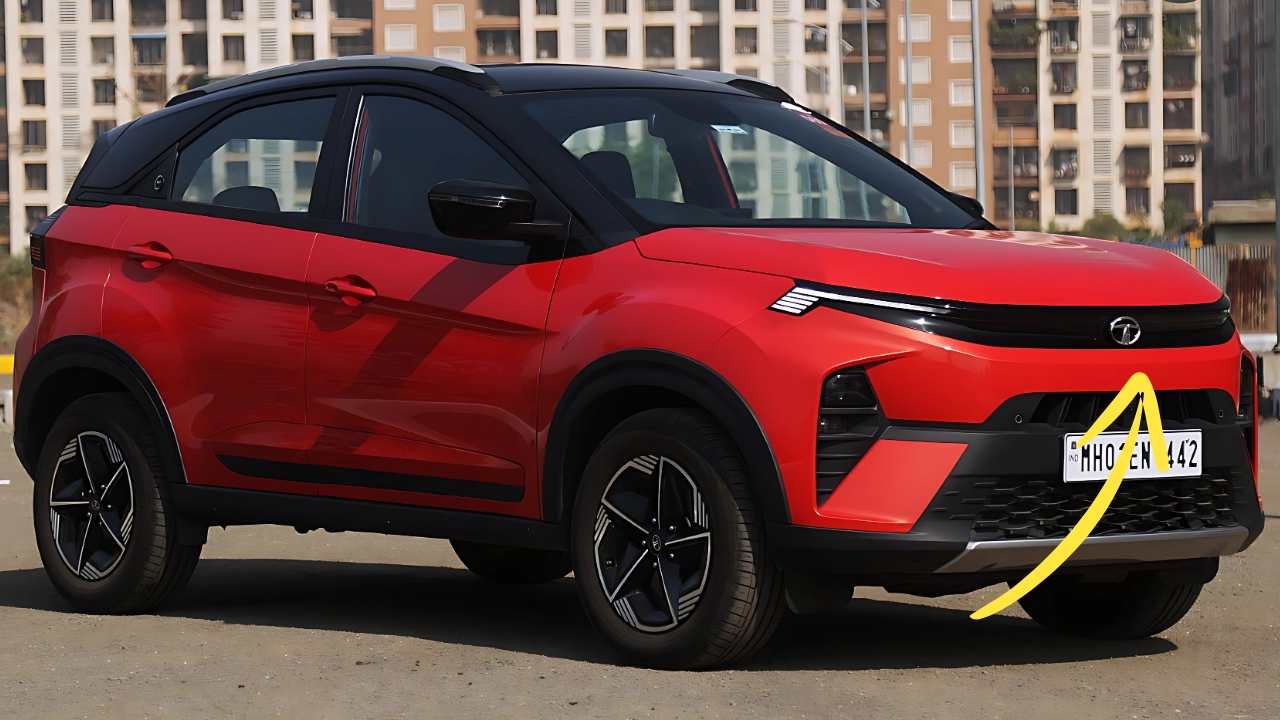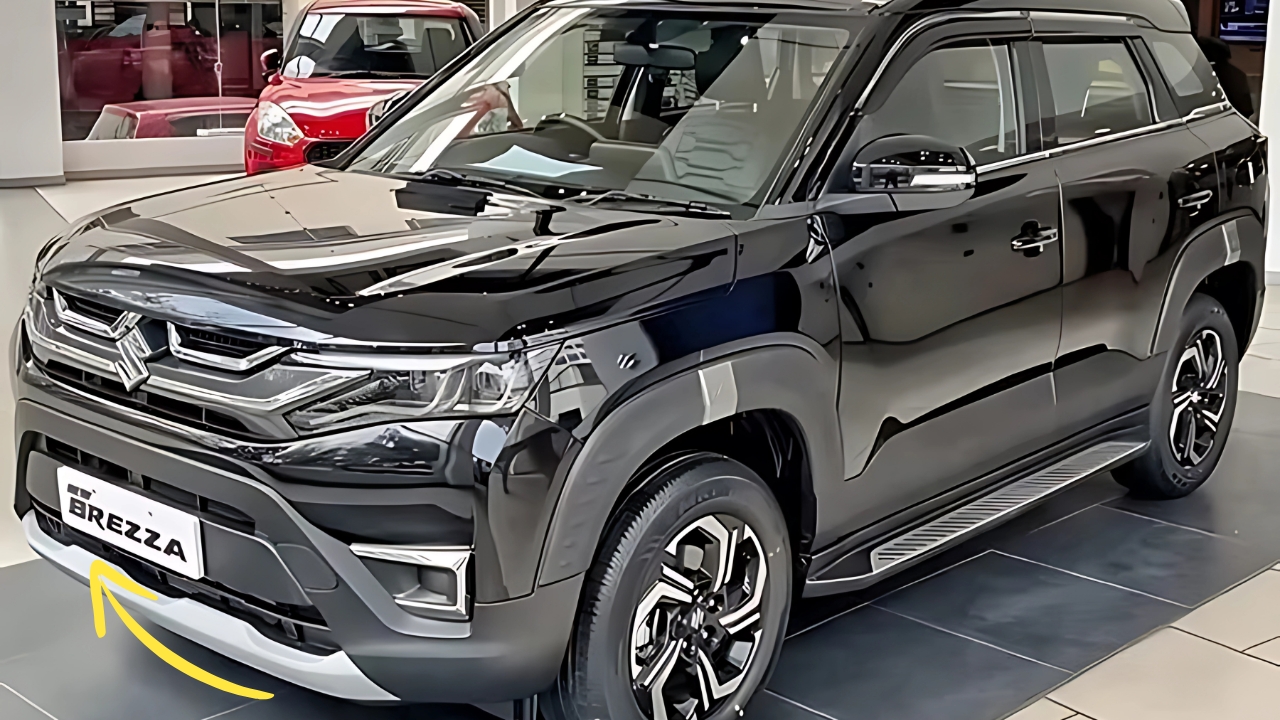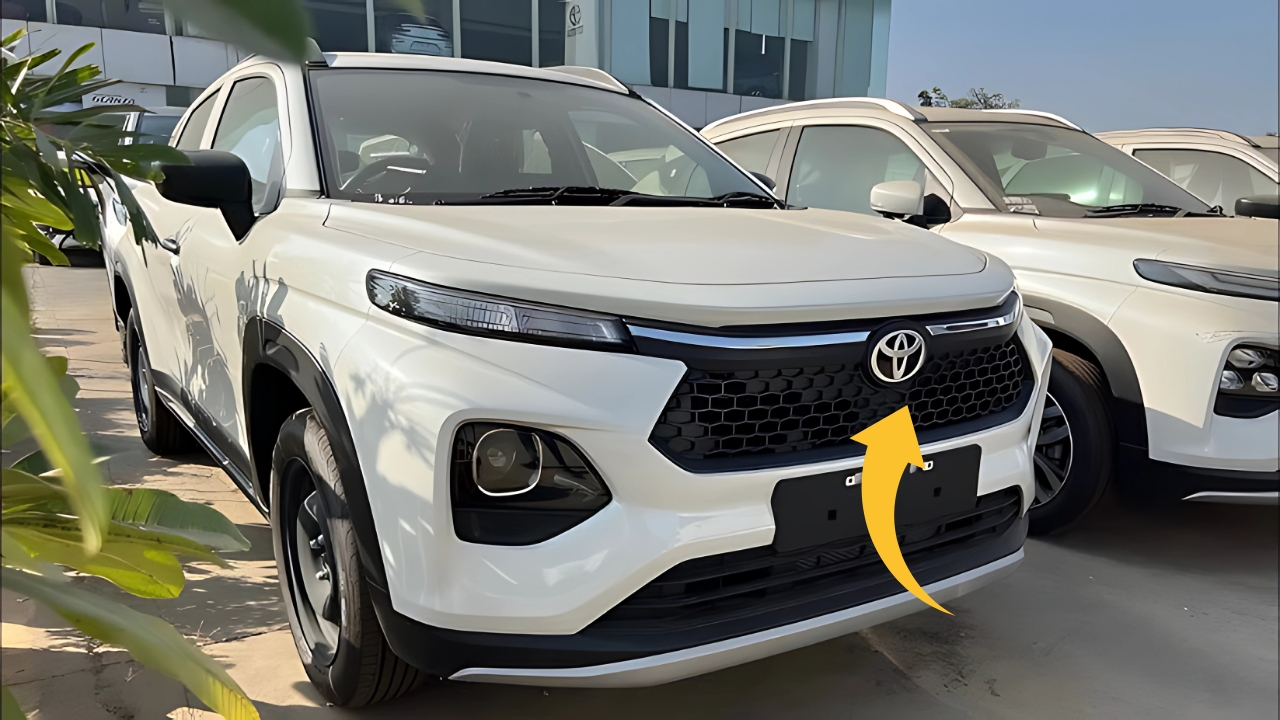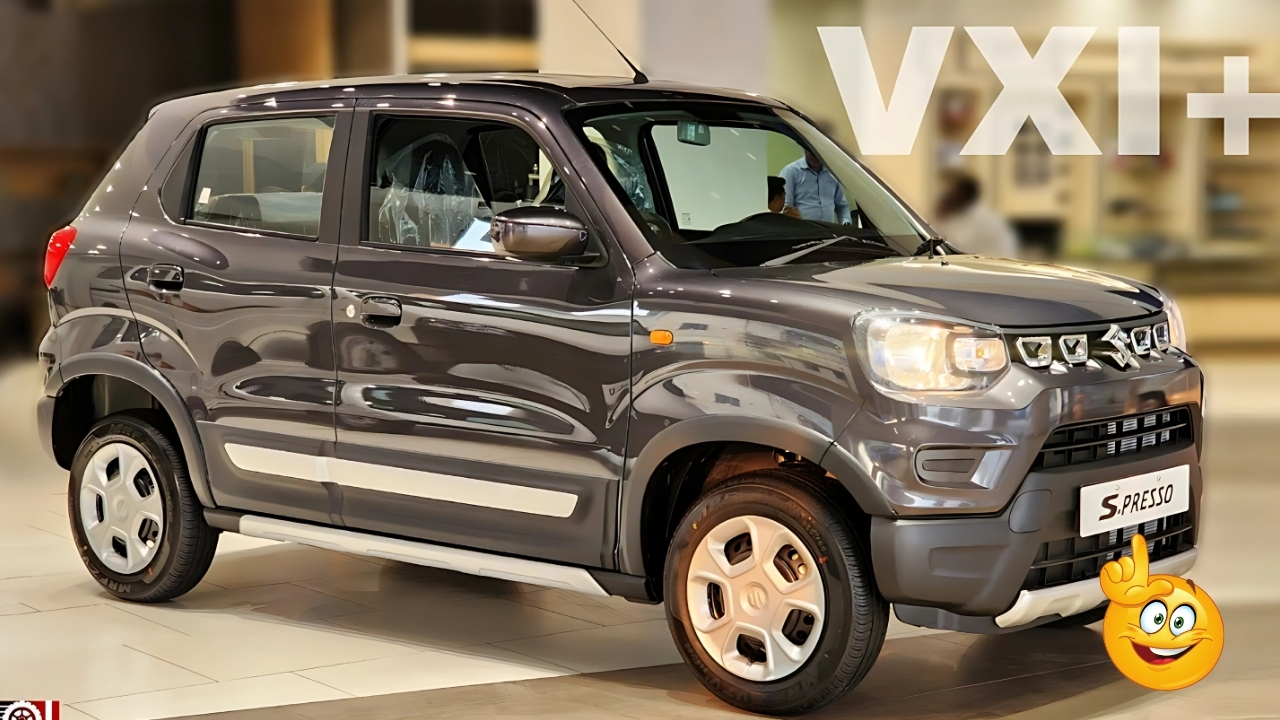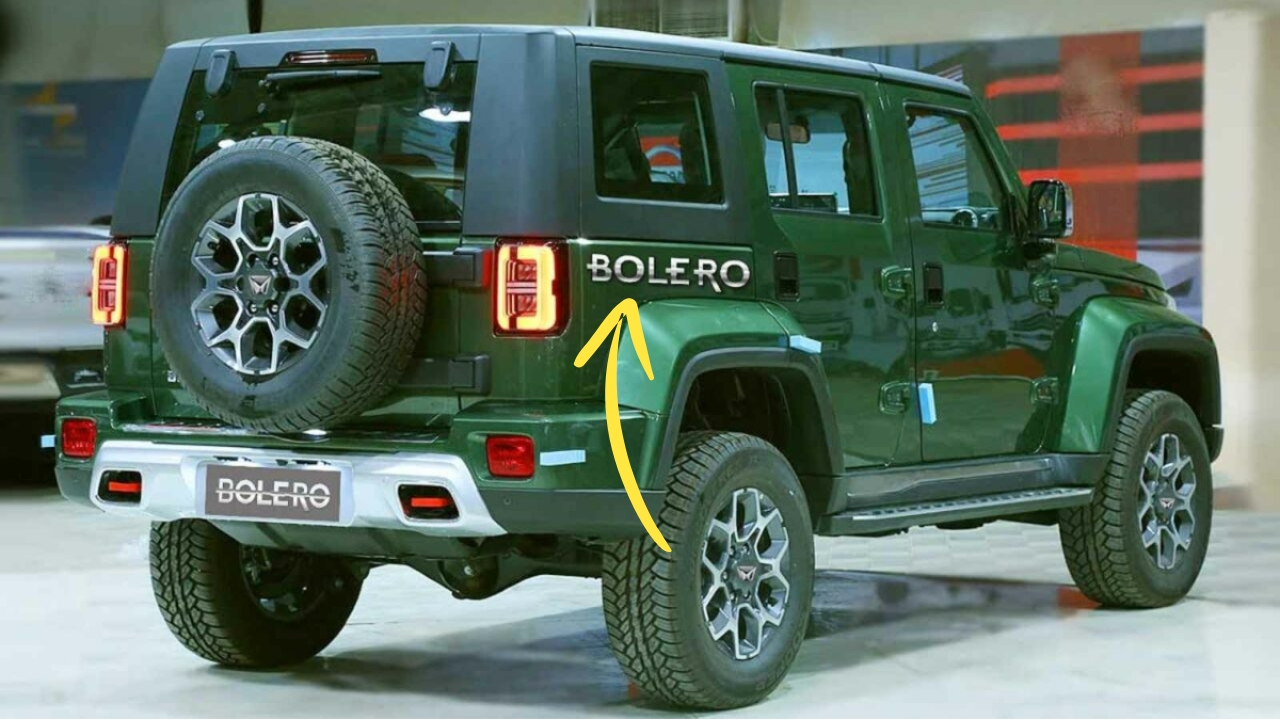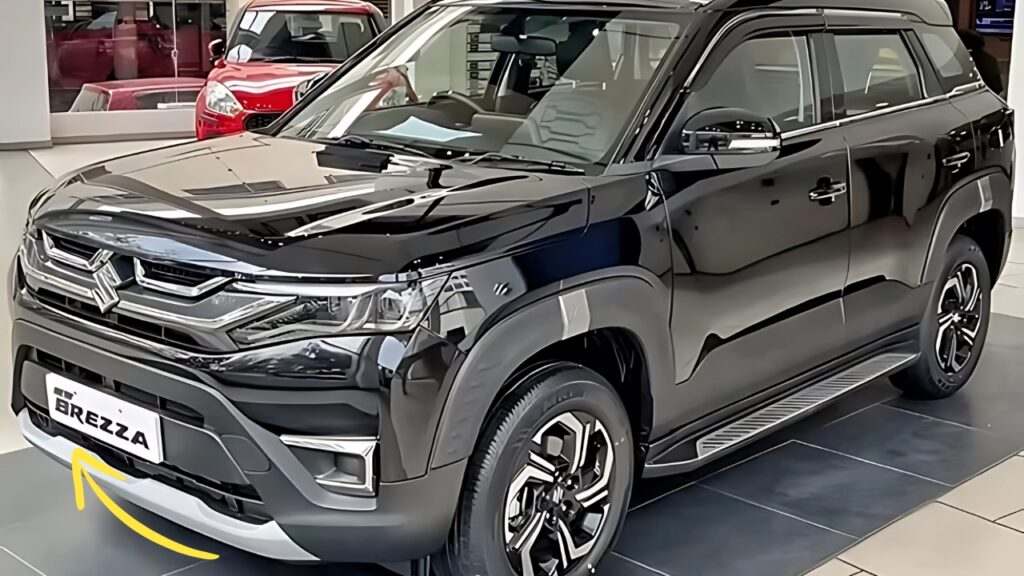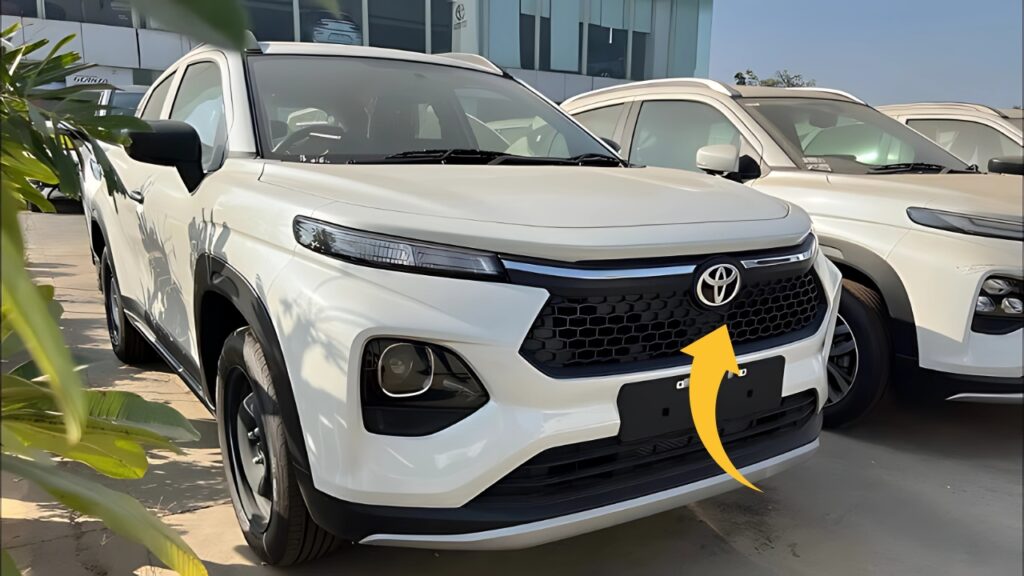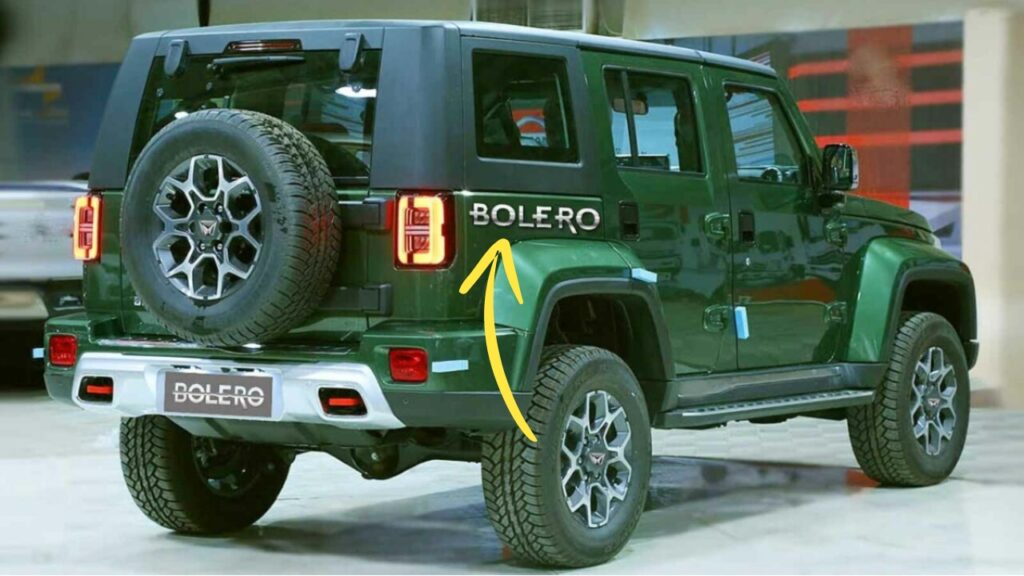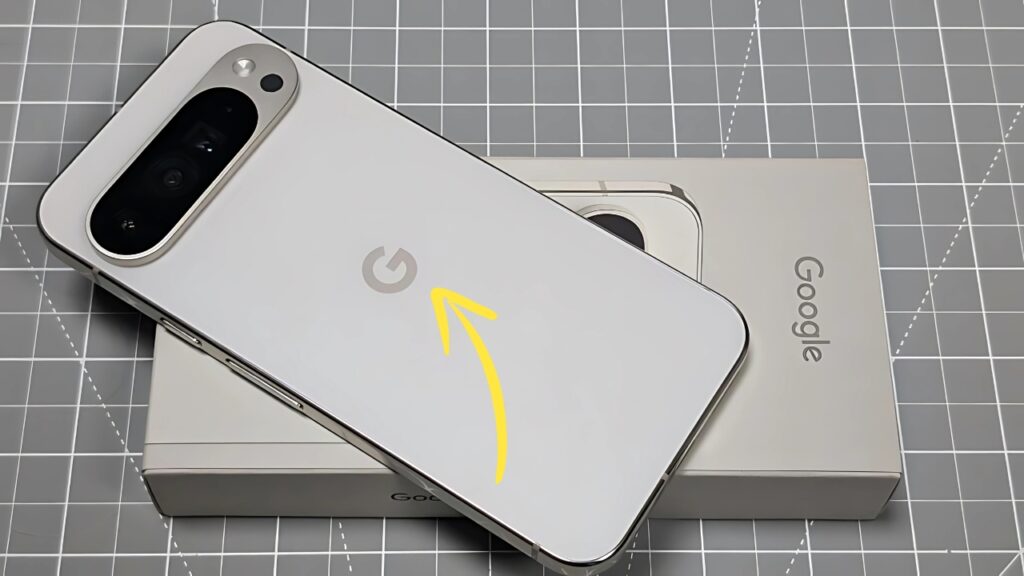Tata Nexon: In the fiercely competitive Indian automotive landscape, few vehicles have managed to carve such a distinctive identity as the Tata Nexon.
Launched in 2017 and significantly refreshed in 2020, this compact SUV has not merely been a product for Tata Motors but rather a statement of intent—a bold declaration that Indian manufacturers can create vehicles that compete with global standards in design, safety, and technology while maintaining a value proposition tailored to local preferences.
What sets the Nexon apart in a segment crowded with contenders is not just its striking visual presence or feature list, but a holistic approach to automotive design that balances seemingly contradictory priorities: safety with style, performance with efficiency, and premium feel with accessible pricing.
The significance of the Nexon extends beyond its commercial success. As the first Indian car to achieve a 5-star Global NCAP safety rating in 2018, it fundamentally altered consumer perceptions about domestic automotive engineering capabilities and elevated safety considerations in purchase decisions across market segments.
This achievement represented not merely a marketing milestone but a paradigm shift in how Indian manufacturers approached vehicle development, with structural integrity becoming a foundational element rather than a secondary consideration.
Furthermore, the Nexon played a pivotal role in Tata Motors’ brand transformation journey, helping shed perceptions of utilitarian functionality in favor of design excellence and contemporary appeal.
The vehicle’s continued evolution through substantial updates rather than mere cosmetic refreshes demonstrates Tata’s commitment to product development as an ongoing process rather than a one-time event—an approach that has garnered increasing customer loyalty and market share in a landscape where consumer preferences shift rapidly and competition intensifies relentlessly.
Tata Nexon: Design Evolution
The exterior design of the Tata Nexon represents one of its most compelling attributes, blending distinctive aesthetics with functional considerations to create a vehicle that stands out in India’s increasingly homogenized automotive landscape.
The current iteration, following the 2020 facelift, embraces Tata’s “Impact 2.0” design language with greater confidence and sophistication than its predecessor.
The front fascia features a sleek grille with the humanity line (a signature Tata design element) flowing into projector headlamps with tri-arrow LED daytime running lights, creating a visually arresting face that’s instantly recognizable.
The hood’s sculpted contours add muscular character while maintaining aerodynamic efficiency. Perhaps most distinctive is the coupe-like silhouette achieved through a floating roof design with contrast color options, creating visual lightness despite the vehicle’s substantial presence.
Along the sides, pronounced wheel arches house alloy wheels (ranging from 16 inches on lower variants to diamond-cut 16-inch units on premium trims) that fill the wells appropriately, avoiding the undernourished appearance common in this segment.
The rising beltline culminates in distinctive taillamps with tri-arrow LED elements that mirror the front DRL signature, creating design coherence around the vehicle.
Color options demonstrate Tata’s understanding of contemporary preferences, with dual-tone schemes particularly enhancing the Nexon’s architectural elements.
The Flame Red with Sonic Silver roof and Pure Grey with Sonic Silver roof options have proven especially popular, allowing personalization without sacrificing sophistication.
Material quality and assembly precision have seen marked improvement over the years, with consistent panel gaps and paint finish reflecting Tata’s enhanced manufacturing processes.
Details like integrated roof rails, shark-fin antenna, and piano black finishes on selected exterior elements contribute to a premium appearance that exceeds price-point expectations.
What makes the Nexon’s design particularly successful is its distinctiveness without eccentricity—creating memorable visual identity while maintaining proportional harmony that ages gracefully rather than following transient styling trends.
This approach has resonated with Indian consumers seeking vehicles that express individuality without sacrificing fundamental design principles.
Interior Experience
The cabin of the Tata Nexon balances contemporary design elements with practical considerations, creating a space that feels more premium than its price positioning might suggest.
The dashboard architecture employs a layered approach with contrasting materials and textures, including soft-touch surfaces in key contact areas and durable plastics elsewhere.
The floating 7-inch touchscreen (upgraded to an 8.8-inch unit in recent iterations) serves as the central focal point, positioned high for minimized eye movement from the road.
Seating comfort deserves particular mention, with well-contoured front seats offering good lateral support and appropriate cushion density for longer journeys.
The driving position benefits from tilt-adjustable steering and height-adjustable driver’s seat (in all but base variants), accommodating diverse physiques.
Rear accommodations provide adequate legroom for adult passengers with a nearly flat floor enhancing middle-seat usability—a thoughtful consideration given Indian family usage patterns.
Storage solutions abound throughout the cabin, from the cooled glovebox and large door pockets to the central armrest bin and smartphone tray ahead of the gear selector.
The 350-liter boot, while not class-leading in raw volume, offers a practical shape and low loading lip that enhances everyday utility.
The 60:40 split folding rear seats expand cargo capacity when needed, though they don’t fold completely flat.
The feature list varies by trim level but includes impressive amenities such as:
8.8-inch touchscreen infotainment with Android Auto and Apple CarPlay
7-inch digital instrument cluster
Automatic climate control with rear vents
Electric sunroof
Wireless phone charger
Auto headlamps and wipers
Cruise control
Air purifier (increasingly valued in pollution-affected urban centers)
Leatherette upholstery
Multi-drive modes with rotary selector
Material quality has improved significantly since launch, though some hard plastics remain in lower contact areas.
Fit and finish show consistent progression across production years, with recent examples demonstrating tight panel alignment and minimal vibration or rattles—areas where earlier specimens occasionally fell short.
Noise, vibration, and harshness (NVH) management represents a mixed achievement. While wind and road noise isolation is commendable at highway speeds, the diesel powertrain transmits more vibration into the cabin than some competitors, particularly at idle.
This characteristic has seen incremental improvement through production refinements but remains an area where further enhancement would benefit the overall experience.
Performance and Drivability
The Tata Nexon offers multiple powertrain combinations to suit varying preferences and usage patterns:
1.2-liter turbocharged petrol: This three-cylinder Revotron unit produces 120 PS and 170 Nm of torque, delivering peppy performance once past the initial turbo lag. While exhibiting the characteristic three-cylinder thrum under acceleration, it settles into refined operation at cruising speeds.
1.5-liter turbocharged diesel: The four-cylinder Revotorq engine generates 110 PS and 260 Nm of torque, with excellent mid-range punch making it particularly well-suited to highway cruising and fully-loaded conditions. Refinement is reasonable for the segment, though not class-leading.
Transmission options include a 6-speed manual and an automated manual transmission (AMT) for both engines, with the latest iterations offering improved shift quality compared to earlier examples.
The manual provides precise engagement with moderate throw lengths, while the AMT, despite its inherent characteristics, offers one of the better-calibrated executions in this price segment, with reduced “head-nod” effect during shifts.
The Nexon’s driving dynamics benefit from well-calibrated suspension tuning that balances ride comfort with reasonable body control.
The MacPherson strut front and twist-beam rear setup absorbs urban road imperfections effectively while maintaining composure over larger undulations at highway speeds.
Ground clearance of 209mm provides confidence on challenging surfaces without excessive body roll in cornering that might compromise everyday handling.
Steering feel has evolved positively through production iterations, with current versions offering appropriate weighting that increases with speed.
While not delivering sports-car feedback, it provides sufficient communication for confident placement on narrow roads or during urban maneuverability.
The multi-drive mode selector (Eco, City, and Sport) meaningfully alters throttle response and power delivery rather than serving as a mere marketing feature.
Sport mode, in particular, transforms the diesel variant’s character with noticeably sharper acceleration, while Eco mode extends range through gentler throttle mapping and earlier upshifts in AMT variants.
Fuel efficiency varies by powertrain and driving conditions, with ARAI-certified figures of 17.4 km/l for petrol and 22.4 km/l for diesel variants.
Real-world economy typically delivers 13-15 km/l for petrol and 17-19 km/l for diesel under mixed driving conditions—competitive figures that contribute to reasonable ownership costs.
Safety Credentials
Safety represents perhaps the Nexon’s most significant contribution to the Indian automotive landscape. Its 5-star Global NCAP rating fundamentally altered market perceptions about safety standards, encouraging competitors to prioritize structural integrity and safety features.
Key safety elements include:
High-strength steel safety cage
Dual front airbags (standard across range)
ABS with EBD and corner stability control
Electronic stability program (higher variants)
ISOFIX child seat anchors
Reverse parking camera with dynamic guidelines
Rear parking sensors
Seat belt reminders for all occupants
Impact-sensing door unlock
Roll-over mitigation
Traction control system
The Nexon’s crashworthiness comes not merely from feature addition but from fundamental engineering principles applied during platform development.
The energy-dispersing structure directs impact forces away from the passenger compartment, maintaining cabin integrity even in severe collision scenarios.
Braking performance comes from disc-drum setup (front-rear) that delivers consistent stopping power with minimal fade even under repeated hard braking.
The electronic stability program intervention feels well-calibrated, providing assistance during emergency maneuvers without feeling overly intrusive during spirited driving.
Comparative Analysis
| Feature | Tata Nexon | Maruti Brezza | Hyundai Venue | Kia Sonet | Mahindra XUV300 |
|---|---|---|---|---|---|
| Starting Price (₹ Lakh) | 7.80 | 8.29 | 7.53 | 7.79 | 8.41 |
| Top Variant Price (₹ Lakh) | 14.35 | 13.80 | 12.72 | 13.89 | 14.07 |
| Engine Options | 1.2L Turbo Petrol, 1.5L Diesel | 1.5L Petrol | 1.0L Turbo Petrol, 1.2L Petrol, 1.5L Diesel | 1.0L Turbo Petrol, 1.5L Diesel | 1.2L Turbo Petrol, 1.5L Diesel |
| Max Power (PS) | 120 (P), 110 (D) | 103 (P) | 120 (TP), 83 (P), 100 (D) | 120 (TP), 100 (D) | 110 (P), 117 (D) |
| Max Torque (Nm) | 170 (P), 260 (D) | 138 (P) | 172 (TP), 114 (P), 240 (D) | 172 (TP), 240 (D) | 200 (P), 300 (D) |
| Transmission | 6MT, 6AMT | 5MT, 6AT | 6MT, 7DCT, iMT | 6MT, 7DCT, 6AT, iMT | 6MT, 6AMT |
| Fuel Efficiency (km/l) | 17.4 (P), 22.4 (D) | 19.8 (P) | 18.1 (TP), 17.5 (P), 23.4 (D) | 18.2 (TP), 23.4 (D) | 17 (P), 20 (D) |
| Length (mm) | 3993 | 3995 | 3995 | 3995 | 3995 |
| Boot Space (liters) | 350 | 328 | 350 | 392 | 257 |
| Global NCAP Rating | 5 Star | 4 Star | 3 Star | Not Tested | 5 Star |
| Key Features | Digital Cluster, Sunroof, Air Purifier | HUD, 360° Camera, Wireless Charging | Bose Audio, Connected Features | Ventilated Seats, Bose Audio | Dual-zone AC, Front Parking Sensors |
Key Highlights
Benchmark Safety: First Indian car to achieve 5-star Global NCAP rating
Distinctive Design: Coupe-like silhouette with floating roof and signature lighting
Powertrain Options: Responsive turbo-petrol and torquey diesel engines
Drive Modes: Meaningful driving character alterations across Eco, City, and Sport
Comfortable Ride: Well-tuned suspension balancing comfort and handling
Feature-Rich: Premium amenities including sunroof and air purifier
Practical Interior: Thoughtful storage solutions and spacious cabin
Build Quality: Solid construction with reassuring door closure sound
Ground Clearance: 209mm clearance for varied terrain capability
Value Proposition: Competitive pricing across variant lineup
Ownership Experience
The ownership experience extends beyond the product itself to encompass after-sales service, maintenance costs, and long-term reliability – areas where Tata Motors has made significant strides in recent years.
Service network coverage has expanded substantially, with over 800 service centers nationwide providing reasonable accessibility even in smaller cities.
The standard warranty of 2 years/75,000 km, though adequate, falls slightly short of some competitors like Hyundai (3 years/unlimited km), though extended warranty packages can extend coverage to 5 years.
Maintenance costs remain competitive, with scheduled service intervals at 10,000 km or 6 months. The average cost per service ranges from ₹3,500 for routine maintenance to ₹7,500 for major services—figures that position the Nexon favorably against most competitors.
Reliability data from longer-term owners suggests continuous improvement in build quality and component durability across production years.
Early examples occasionally reported electrical gremlins and AMT calibration issues, but more recent production demonstrates more consistent quality control.
The powertrain components, particularly the diesel engine, have proven robust even under demanding conditions.
Resale value has strengthened considerably following the 5-star safety rating and overall brand perception improvement, with three-year-old examples typically retaining 65-70% of their value—a significant improvement over previous Tata products and approaching the retention rates of market leader Maruti Suzuki.
Tata Nexon:
The Tata Nexon represents a watershed product for both its manufacturer and the Indian automotive market as a whole.
By prioritizing structural safety without compromising on design appeal or feature content, it has helped elevate consumer expectations across the compact SUV segment while demonstrating that Indian engineering can deliver world-class vehicles when fundamental development priorities are correctly established.
Its strengths lie particularly in its distinctive design identity, impressive safety credentials, and value-oriented feature packaging—elements that address both emotional and rational purchase motivations.
The multiple powertrain options provide welcome flexibility for different usage patterns and preferences, though the diesel-AMT combination perhaps best exemplifies the vehicle’s character with its effortless drivability and efficiency.
Areas for potential further refinement include NVH management, particularly for the petrol engine at lower RPMs, and interior material quality in certain areas.
The infotainment system, while functional, lacks the processing speed and interface refinement of some competitors’ latest offerings.
For consumers prioritizing safety, distinctive design, and value for money, the Nexon presents a compelling proposition that merits serious consideration alongside more established competitors.
Its continued sales momentum and expanding variant lineup suggest that Tata has found a winning formula that resonates with increasingly discerning Indian buyers who seek more than mere transportation from their automotive purchases.
As the compact SUV segment continues to evolve with new entrants and technological advancements, the Nexon’s trajectory offers valuable insights into how domestic manufacturers can successfully compete by developing authentic product identities rather than merely following established formulas.
In this respect, the Nexon’s greatest achievement may be in demonstrating that being distinctively Indian can be a competitive advantage rather than a limitation in the global automotive context.
